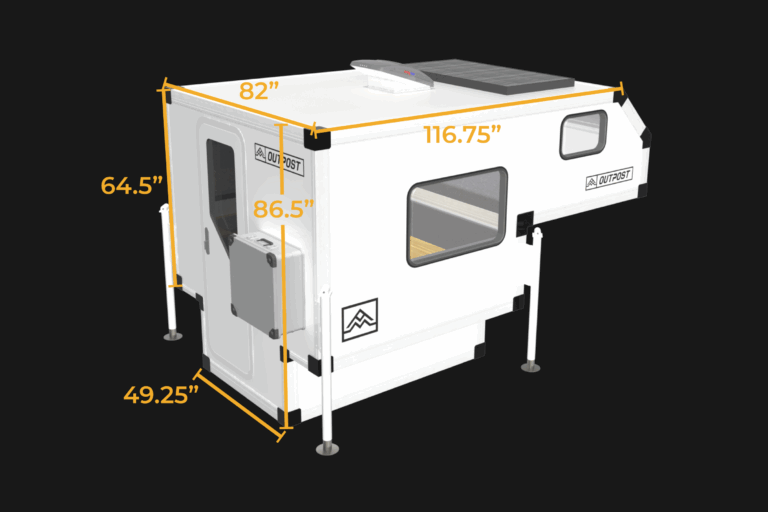Interior Dimensions Of A Straight Truck: A Comprehensive Guide to Maximizing Your Cargo Space
Interior Dimensions Of A Straight Truck: A Comprehensive Guide to Maximizing Your Cargo Space cars.truckstrend.com
In the world of logistics, moving, and delivery, a straight truck (often called a box truck, cube van, or moving truck) is an indispensable asset. From residential moves to commercial freight transport, these versatile vehicles offer a self-contained cargo area perfect for a myriad of tasks. However, the true utility of a straight truck isn’t just in its existence, but in understanding its interior dimensions. These critical measurements – length, width, and height – dictate precisely how much cargo you can fit, what type of items you can transport, and ultimately, the efficiency and cost-effectiveness of your operation.
Ignoring the nuances of a straight truck’s interior dimensions can lead to costly mistakes: wasted trips due to insufficient space, damaged goods from improper loading, or even legal issues if weight limits are exceeded. This comprehensive guide will delve deep into every aspect of a straight truck’s interior dimensions, providing you with the knowledge and practical insights to make informed decisions and optimize your hauling capabilities.
Interior Dimensions Of A Straight Truck: A Comprehensive Guide to Maximizing Your Cargo Space
Understanding the Core Metrics: Length, Width, and Height
The foundation of comprehending a straight truck’s capacity lies in its three primary interior measurements: length, width, and height. These figures, when understood in detail, allow for precise planning and efficient cargo management.
1. Interior Length
The interior length of a straight truck is measured from the inside of the front wall (bulkhead) to the inside of the rear door. This is often the most advertised dimension when you rent or purchase a straight truck, typically ranging from 10 feet for smaller models to 26 feet for the largest non-CDL (Commercial Driver’s License) vehicles.
- Common Lengths and Their Applications:
- 10-12 Foot Trucks: Ideal for studio apartments, small 1-bedroom apartments, or light commercial deliveries of small items.
- 14-16 Foot Trucks: Suitable for 1-2 bedroom apartments, small office moves, or regular commercial deliveries of moderately sized goods.
- 20-22 Foot Trucks: Perfect for 2-3 bedroom houses, larger office relocations, or significant commercial freight.
- 24-26 Foot Trucks: Designed for 3-5+ bedroom houses, large-scale commercial operations, or transporting multiple pallets of goods.


It’s crucial to remember that the advertised exterior length of the truck does not always directly translate to usable interior length. Structural elements, the thickness of the walls, and the design of the bulkhead can slightly reduce the internal measurement. Always confirm the interior length when planning.
2. Interior Width
The interior width is measured from inside wall to inside wall, typically at the widest point. While the exterior width of a straight truck is often standardized around 96 to 102 inches (8 to 8.5 feet) for road regulations, the interior width is significantly less due to the thickness of the walls and insulation.
- Typical Interior Widths:

- Most straight trucks will have an interior width ranging from 75 inches (approx. 6 feet 3 inches) to 98 inches (approx. 8 feet 2 inches).
- Critical Note on Wheel Wells: The most significant factor impacting interior width is the presence of wheel wells (or fender wells). These protrusions into the cargo area, necessary to house the rear wheels, dramatically reduce the usable floor width for a portion of the truck’s length. Above the wheel wells, the width typically expands back to its maximum.
3. Interior Height
The interior height is measured from the floor of the cargo area to the ceiling or roof. This dimension is vital for accommodating tall items like refrigerators, wardrobes, or stacked pallets.
- Typical Interior Heights:
- Interior heights usually range from 75 inches (approx. 6 feet 3 inches) to 96 inches (8 feet).
- Some specialized "high-cube" straight trucks might offer slightly more height, but standard models usually fall within this range.
- Just like with length, the rear door opening height can be less than the internal height, which is a critical consideration for loading.
Calculating Cubic Capacity
Once you have the precise interior length, width, and height, you can calculate the cubic capacity of the truck. This figure represents the total volume of space available for cargo.
- Formula: Cubic Capacity (Cubic Feet) = Interior Length (feet) x Interior Width (feet) x Interior Height (feet)
For example, a truck with an interior of 20 feet long, 7.5 feet wide, and 7 feet high would have a cubic capacity of 20 x 7.5 x 7 = 1050 cubic feet. This calculation is crucial for estimating how many boxes, pieces of furniture, or pallets will fit.
Beyond the Basics: Crucial Considerations Affecting Usable Space
While the primary dimensions give you a good starting point, several other internal features significantly impact the usable interior dimensions of a straight truck.
1. Wheel Wells: The Unseen Obstacle
As mentioned, wheel wells are the bane of efficient loading for many. They are typically located about 2-4 feet from the rear of the truck and extend for several feet forward.
- Impact: They reduce the floor width by approximately 15-20 inches on each side, meaning the area between the wheel wells can be as narrow as 40-50 inches.
- Dimensions: A typical wheel well might be 12-18 inches high, 15-20 inches wide, and 3-5 feet long.
- Solution: Plan to load smaller, irregular items, or items that can rest on top of the wells (like mattresses or lighter boxes) over these areas. Some movers build temporary platforms to level the floor above the wheel wells for certain cargo.
2. Rear Door Opening Dimensions
This is one of the most overlooked, yet critical, dimensions. The actual opening of the rear door is almost always smaller than the truck’s internal width and height.
- Roll-up Doors: These are common and convenient but typically take up several inches of headroom when rolled up, and their tracks can narrow the side-to-side opening.
- Swing-out Doors: Offer a wider and taller opening, often closer to the truck’s internal dimensions, making them ideal for very wide or tall items. However, they require more space behind the truck to open fully.
- Impact: Always measure your largest items (e.g., a refrigerator, sofa, or large desk) against the rear door opening, not just the internal dimensions, to ensure they can actually get into the truck.
3. Bulkhead and Cab-Over Area
The bulkhead is the front wall separating the cargo area from the cab. Some straight trucks, especially rental models, feature a "cab-over" or "attic" space above the truck’s cab.
- Cab-Over Area: This is an irregular-shaped space, often lower in height than the main cargo area, and is excellent for lighter, bulky items like mattresses, cushions, or oddly shaped furniture that doesn’t need full height clearance. Its dimensions vary widely by truck model.
4. Tie-Down Points and E-Track Systems
While not a dimension themselves, the placement and availability of tie-down points (like D-rings) or E-track systems along the interior walls are crucial for securing cargo. Their presence can subtly influence how you arrange items and whether certain spaces are usable for specific types of cargo.
Matching Dimensions to Your Needs: Practical Applications
Understanding the interior dimensions of a straight truck is not just academic; it’s intensely practical.
-
Residential Moving:
- Furniture: Measure sofas, beds, refrigerators, and washing machines. A standard refrigerator might be 30-36 inches wide, 65-70 inches tall, and 30-35 inches deep. Ensure it fits through the rear door and has sufficient internal height.
- Boxes: Knowing cubic capacity helps estimate how many boxes will fit.
- Loading Plan: Use the dimensions to create a mental or drawn loading plan, ensuring heavy items are low and centered, and delicate items are protected.
-
Commercial Deliveries:
- Pallets: Standard U.S. pallets are 48 inches long x 40 inches wide. Most straight trucks can fit two pallets side-by-side (80 inches width needed between wheel wells), but the length dictates how many rows. A 26-foot truck can typically hold 12-14 standard pallets if loaded efficiently.
- Machinery/Equipment: For large or heavy equipment, not only interior dimensions but also floor strength, tie-down points, and ramp/liftgate capacity become critical.
-
Specialized Cargo:
- Tall Items: Art installations, custom cabinetry, or tall displays require ample interior height and a clear rear door opening.
- Wide Items: Large sheets of material (e.g., plywood), wide signs, or large appliances need sufficient width, especially between the wheel wells.
Tips for Maximizing Space and Efficiency
Knowing the interior dimensions of a straight truck is the first step; maximizing them is an art.
- Measure Everything: Before you even rent the truck, measure your largest and most critical items.
- Create a Loading Plan: Sketch out how you intend to load items, especially around the wheel wells.
- Load Heaviest Items First and Low: This maintains the truck’s center of gravity and prevents damage.
- Utilize Vertical Space: Stack sturdy boxes and items to the ceiling, leaving enough room for ventilation and preventing crushing.
- Disassemble When Possible: Beds, tables, and some furniture can be broken down to save significant space and make loading easier.
- Use Moving Supplies: Dollies, hand trucks, moving blankets, and tie-down straps are essential for safe and efficient loading.
- Consider Weight Distribution: Even if the volume fits, ensure you don’t exceed the truck’s Gross Vehicle Weight Rating (GVWR) or Gross Axle Weight Rating (GAWR).
Challenges and Solutions
Despite careful planning, challenges can arise.
- Underestimating Space: This is the most common issue.
- Solution: Always err on the side of caution. If in doubt, rent the next size up. It’s cheaper than making two trips.
- Awkwardly Shaped Items: Items that don’t fit neatly.
- Solution: Disassemble what you can. Use blankets and straps to secure them against walls or other sturdy items. Utilize the cab-over space for lighter, odd-shaped items.
- Wheel Well Obstruction:
- Solution: Fill the space around and on top of the wells with smaller boxes, bags, or soft items. For long, flat items, consider placing them on top of the wells if they are sturdy enough to bridge the gap.
- Rear Door Clearance Issues:
- Solution: For tall items, try tilting them to get them through the door. If renting, specify a truck with swing-out doors if you have particularly wide or tall items.
Interior Dimensions Of A Straight Truck: Typical Specifications and Rental Cost Implications
Understanding the typical interior dimensions of various straight trucks can help you select the right vehicle for your needs. The "price" column below indicates estimated daily rental costs and are subject to significant variation based on location, rental company, duration, mileage, and insurance.
| Truck Size (Exterior Length) | Typical Interior Length (ft) | Typical Interior Width (in) | Typical Interior Height (in) | Estimated Cubic Feet | Common Use Cases | Estimated Rental Cost Range (Daily, +mileage) |
|---|---|---|---|---|---|---|
| 10-12 ft Straight Truck | 9.5 – 11.5 | 75 – 80 | 75 – 80 | 400 – 500 | Studio/1 BR apt, small deliveries | $30 – $60 |
| 14-16 ft Straight Truck | 13.5 – 15.5 | 80 – 90 | 80 – 85 | 600 – 800 | 1-2 BR apt, small business cargo | $40 – $80 |
| 20-22 ft Straight Truck | 19.5 – 21.5 | 90 – 94 | 85 – 90 | 1000 – 1400 | 2-3 BR house, mid-size commercial | $60 – $120 |
| 24-26 ft Straight Truck | 23.5 – 25.5 | 94 – 98 | 90 – 96 | 1600 – 2000 | 3-5 BR house, large commercial cargo | $80 – $150 |
| Note: Wheel wells will significantly reduce floor width in a portion of the cargo area. Rear door openings are typically 2-6 inches smaller than interior width/height. These dimensions are averages and can vary by manufacturer and model. Rental costs do not include fuel, mileage, or insurance. |
Frequently Asked Questions (FAQ)
Q1: What is the standard interior width of a straight truck?
A1: The standard interior width of a straight truck typically ranges from 75 inches (about 6 feet 3 inches) to 98 inches (about 8 feet 2 inches). However, it’s crucial to remember that wheel wells significantly narrow the usable floor width for a portion of the truck’s length.
Q2: Do all straight trucks have wheel wells inside the cargo area?
A2: Almost all straight trucks will have wheel wells protruding into the cargo area, especially larger models that use dual rear wheels. These are necessary to house the truck’s rear tires. Only very small cargo vans or some specialized flat-floor designs might avoid them, but they are standard for most box trucks.
Q3: How do I calculate the cubic capacity of a truck?
A3: To calculate the cubic capacity, multiply the interior length (in feet) by the interior width (in feet) by the interior height (in feet). For example, 20 ft (L) x 7.5 ft (W) x 7 ft (H) = 1050 cubic feet.
Q4: Is the rear door opening always smaller than the interior width/height?
A4: Yes, almost always. Whether it’s a roll-up door or swing-out doors, the frame, hinges, and tracks will reduce the effective opening size compared to the full internal dimensions of the cargo box. Always measure your largest items against the door opening.
Q5: What’s the difference between exterior and interior dimensions?
A5: Exterior dimensions refer to the overall size of the truck from the outside, including the walls and roof. Interior dimensions refer specifically to the usable space inside the cargo area, after accounting for wall thickness, insulation, and internal structures like wheel wells. Interior dimensions are what truly matter for loading cargo.
Q6: How much furniture can a 26-foot straight truck hold?
A6: A 26-foot straight truck is generally considered capable of holding the contents of a 3-5 bedroom house, including large furniture items like multiple sofas, king-size beds, dressers, appliances (refrigerator, washer/dryer), and numerous boxes. Its typical cubic capacity is 1600-2000 cubic feet.
Q7: Can I fit a standard pallet in any straight truck?
A7: A standard U.S. pallet is 48 inches long x 40 inches wide. Most straight trucks with an interior width of 80 inches or more (above the wheel wells, or between them if narrow enough) can fit two pallets side-by-side. However, smaller 10-12 foot trucks often have interior widths too narrow to fit two pallets across, and the wheel wells might limit even a single pallet’s placement for part of the length. Always check the interior width, especially between the wheel wells, if you plan to transport pallets.
Conclusion
The interior dimensions of a straight truck are far more than just numbers; they are the blueprint for successful, efficient, and damage-free transportation. By meticulously understanding the length, width, and height, factoring in crucial elements like wheel wells and door openings, and employing smart loading strategies, you can transform a seemingly simple box on wheels into a highly optimized cargo-carrying machine. Whether you’re a first-time renter moving homes or a seasoned logistics professional, mastering these dimensions is the key to maximizing your truck’s potential and ensuring every load is a success. Knowledge, in this case, truly is power, ensuring your cargo gets from point A to point B safely and effectively.





